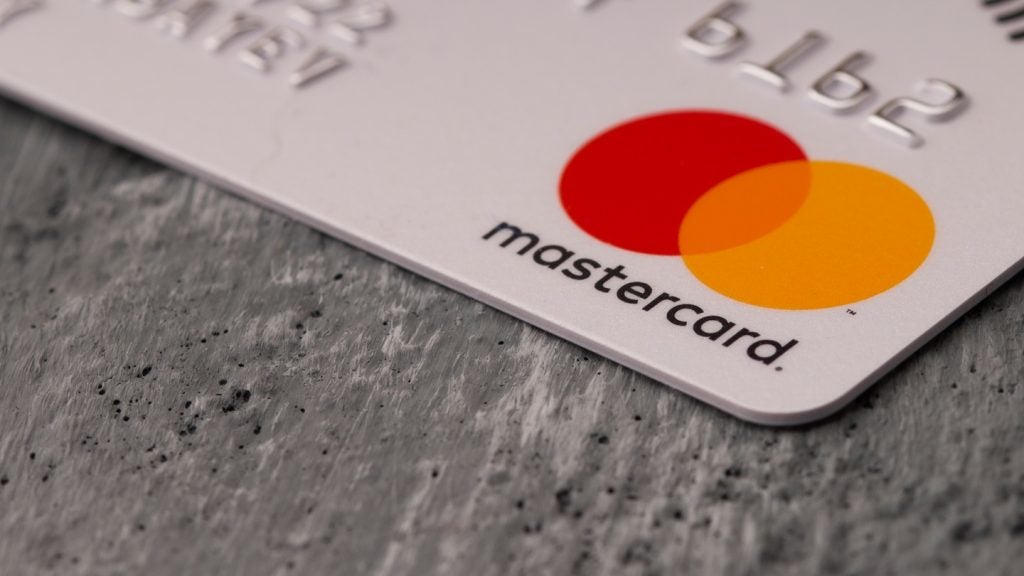Electronic bank account management was a big talking-point on the international treasury conference circuit in 2011, as banks and vendors reported on their EBAM pilots. But the journey from trials to implementation is a long one, Robin Arnfield reports
At SIBOS in Toronto (September 2011), the Association for Financial Professionals (AFP) annual conference in Boston (November 2011), and the EuroFinance International Cash and Treasury Management conference in Rome (October 2011), EBAM was an acronym on everyones lips. Corporate treasury executives were keen to understand it, and vendors were gearing up to launch it.
With a number of services in the market, and high-profile early adopters running the systems, 2012 promises to see significant activity as the mass market catches on.
Those treasurers are under increasing pressure to provide robust audit trails for their corporate account transactions, and electronic bank account management (EBAM) has set the standard for doing so.
Using EBAM systems, companies can electronically add and delete authorized account signatories, and digitally execute documents using e-signatures, without needing paper signatures.

US Tariffs are shifting - will you react or anticipate?
Don’t let policy changes catch you off guard. Stay proactive with real-time data and expert analysis.
By GlobalDataThe systems being developed automate and standardize the opening, closing and maintenance of bank accounts and treasury services. And with financial messaging provider SWIFT, major global banks, technology vendors, and international corporations participating in EBAM pilots, there is plenty to talk about.
Corporate treasurers are driving us to provide EBAM, says Blaise Scioli, a product manager at US-based vendor E5 Solutions Group, whose treasury management software includes an EBAM module, Overture5. Everybody wanted to have conversations with us as we went through the product design process for Overture5.
E5 launched Overture5 in October 2011 in response to a demand from ERP (enterprise resource planning) system vendor SAP for an EBAM module that SAP could integrate with its software.
Bank account management
EBAM has two components – bank account management, and electronic communications between the corporation and its bank, says Paul Higdon, chief technology officer at London and New York-based IT2 Treasury Solutions, which provides treasury systems for banks and corporations.
The BAM part is concerned with the management of bank accounts at the corporate side, while the electronic communications element is concerned with automating and standardising messages between corporate treasury systems and banks for the opening, closing and maintenance of bank accounts, says Higdon. Its probably wise for corporates to first get their house in order by setting up bank account management. This will cut down on manual processes and give the corporates more internal control, and then, when banks come on board, they can make the electronic connection and deploy EBAM.
Bank account management (BAM) technology allows companies to compile accurate inventories of their accounts with different banks across the globe, including account signatories and authorisation limits. The benefits of BAM include increased efficiency in managing accounts and compiling the reports on account ownership and mandates (mandates are lists of individuals authorised to perform financial transactions from designated bank accounts) that are required by external and internal auditors. Previously, treasurers had to manually create Excel spreadsheets of their corporations various accounts.
Large companies can have up to 20 different banking relationships, says Nancy Atkinson, a senior analyst at US-based consultancy Aite Group. Its very important to have ready access to information on all the signatories to these accounts, so that, if a signatory leaves the firm, their transaction authorisation can be removed very quickly.
When a CFO leaves, without EBAM, it can take two days to track the bank accounts they are a signatory to, create the paperwork and send it to the bank, says E5s Scioli. Then it might take up to four weeks before the corporation gets confirmation from the bank that the request to remove the CFO has been actioned.
Digital signatures
Linking up with bank-operated EBAM services allows corporates to move from mailing or faxing paper documents with ink signatures to electronic messages and digital signatures.
Two examples of digital signatures that can be used for EBAM are SWIFTs 3SKey technology, and IdenTrust Trust Prime. IdenTrust is a consortium of international banks that provides digital certificates for electronic payments and EBAM.
SWIFT has played an important role in standardising EBAM communications between banks and corporates, through its work with global banks to develop the ISO 20022 EBAM XML-based messaging standard for bank account opening, closure and maintenance. ISO 20022 EBAM XML is a subset of the ISO 20022 catalogue of XML-based open standards for financial messaging, including foreign exchange, trade, invoicing, and payments.
Adopting ISO 20022 EBAM XML enables corporations to use the same open-standard format to communicate with multiple banks and to get a clear view of all their bank accounts.
Must-have service
The end-to-end straight-through-processing (STP) of EBAM may be some time away, as it requires an automated process stretching from the corporation to the banks back-office. However, industry participants agree that EBAM will eventually become a must-have service for banks.
While corporates see EBAM as a means of improving internal controls over their various bank accounts, banks see EBAM as a means of increasing efficiency, improving customer service and retaining clients.
Because EBAM enables new accounts to be opened for a client much more quickly than using traditional manual account-opening processes, this allows banks to start generating revenue from these new accounts sooner, says Atkinson.
When corporations file requests to their banks via EBAM, rather than posting paper documents, information is completed with greater accuracy, says Anand Mitra, global product manager for EBAM at Citi. Paper documents can be returned if they contain errors, causing delays in fulfilling customers requests.
One of the key drivers for corporate interest in EBAM is the financial instability caused by the 2008 financial crisis. As the crisis unfolded, corporations came to realise the shortcomings of their financial controls. Many corporations did not have a full view of their relationship and exposure to individual banks, which hampered them in controlling their risk and also made it more difficult to comply with regulatory reporting requirements.
For example, under the Bank Secrecy Act, US citizens are required to file an annual report of their personal foreign bank and financial accounts (known as FBAR/ Report of Foreign Bank and Financial Accounts) to the US Internal Revenue Service. Additionally, anyone who has signature authority over a foreign bank or financial account also has to make an FBAR filing. This means that many US companies that have control over their foreign subsidiaries are required to file reports.
FBAR is driving adoption of bank account management technology, says Kurt Vandebroek, vice president, product management, at US-based financial technology vendor SunGard. If you dont have an inventory of your accounts abroad, its difficult to comply with FBAR.
Power balance
Jeanne Capachin, research vice president, corporate treasury and spending guides, at US-based consultancy IDC Financial Insights, thinks that the financial crisis helped to shift the power balance between banks and corporations. Corporations have become more powerful in their relationship with banks, she says. After the financial crisis, a lot of corporations moved their business to other banks, and financial institutions realized they had to do a lot more to keep customers satisfied. Getting a full view of their banking relationships helps corporations gain bargaining power in banking relationships.
Microsoft and a number of other big multinationals are driving EBAM, says Jaime Ryan, a founding partner at E5. With the financial crisis, and the rush of major banks folding, there was growth in the idea of being able to be bank-agnostic and to be able to move rapidly from one bank to another. Corporates want their bank to be plug-and-play and to use open standards, they dont want to be tied to any single banking interface. They are looking to judge banks on service offering and cost.
Ryan thinks that Microsoft will play a similar role in helping to establish ISO 20022 EBAM XML as it did in defining a standard implementation of ISO 20022 XML messages for cash management over SWIFTs network.
In a joint initiative with Bank of America Merrill Lynch (BofAML) and Citigroup, Microsoft announced at SIBOS in September 2011 that it had become the first corporation to move cash management in its treasury operation to ISO 20022 XML camt.052 and camt.053 version two, which is a subset of ISO 20022. The move means that Microsoft is able to receive electronic bank statements from its global banking providers in a common format.
Microsoft Treasury brought its banks to the table and got them to agree on XML, Capachin says. Thats what EBAM XML will take, people who can force the issue and get the banks to agree on how to exchange information.
SWIFT pilots
In 2011, SWIFT teamed up with banking and corporate partners for a trial of its ISO 20022 EBAM XML hub known as the Electronic Bank Account Management Central Utility (E-CU).
According to SWIFT, the E-CU acts as a single platform for communications between a corporation and its multiple banking partners, using 3SKey digital signatures. It also provides a document requirements database which stores, per bank and per country, all the information account-owners need to provide, together with EBAM instructions, such as templates and country-specific requests.
Once the EBAM instruction is submitted, the E-CU ensures it complies with all set rules, guidelines and requirements, even if they are country- or bank-specific, SWIFT says.
Four banks, Royal Bank of Scotland (RBS), BNY Mellon, Citigroup, and JPMorgan Chase, were involved in the SWIFT pilot, along with seven multinationals: IBM, BT, Swiss Re, BMC Software, General Electric, MetLife and Fujitsu.
As its contribution to the pilot, J.P. Morgan Treasury Services worked with three of its clients, MetLife, Fujitsu, and SWIFT Treasury. The J.P. Morgan Treasury Services trial studied the risk of different interpretations and usage of eBAM messaging standards, and tested account-holders on their understanding of the information required for preparing eBAM instructions.
Separately, IBM used the E-CU to send digitally-signed requests to RBS to open accounts in the Netherlands and the US.
SWIFT used SunGards AvantGard EBAM portal together with SunGards EcoSystem Communication Hub (Echos) communications system for its E-CU pilot. SWIFTs board of directors is expected to decide in March 2012 whether to invest in the full rollout of the E-CU, SunGards Vandebroek says.
The Daily News at SIBOS (2011) publication quoted Carlo Palmers, SWIFTs corporate market solution manager, as saying he was hopeful that the E-CU will be in full production by the end of 2012. The vendor for an eventual rollout has not been announced by SWIFT.
BofAML
Our clients have identified EBAM as a top priority, says Tom Durkin, global head of integrated channels at BofAML, basing his view on conversations with the banks corporate customers. Providing standards-based EBAM services to corporations improves their customer experience.
Currently, corporate clients number one requirement is to gain visibility into their existing accounts and signatories, Durkin says. Corporates want an up-to-date view of the signatories to all their accounts, and they dont always have that.
The second requirement, according to Durkin, is for standardised EBAM communications with different banks. Corporate treasury teams see EBAM as a natural extension of their treasury management systems, he says. So, providing an EBAM service will become a key business criterion when corporations select banking partners. Corporates will look to see which bank is making investments in EBAM, and you dont want to be the bank that doesnt offer the service
BofAML offers web-based EBAM to customers using its CashPro treasury management service. Currently, we have 25 corporate clients in the US and Europe who are at different stages of implementing EBAM, Durkin says. Achieving the goal of true EBAM will take time and collaboration between corporations and banks. In fact, good collaboration between both sides will be the key to success.
Durkin believes the challenge that corporations and banks will face, will be in implementing new processes and optimising change. The hard work is in changing the business processes, he says. Theres still a lot of work to do, certainly through 2012 and into 2013.
Citigroup
Citigroup provides the eBAM Premier service, which uses digital signatures for bank account management, through its proprietary CitiDirect BE online banking platform. As of February 2012, the service is available in 20 countries in Asia, EMEA and North America.
As well as allowing clients to send account-opening requests electronically to Citi, eBAM Premier lets them make some changes instantly themselves, Citis Mitra says. In the past, these changes would have taken two to four weeks to implement.
According to Mitra, a large number of Citis corporate clients have expressed an interest in EBAM. Citi conducted an EBAM early adopter program with five clients in the US and two in Europe, including Microsoft and Proctor & Gamble. What our pilots taught us is that, for EBAM adoption to succeed, clients as well as banks need to make changes to their systems, Mitra says. In order to get the best out of EBAM, clients first need to clean up their data.
Untypical
With their aggressive championship of EBAM, Citi and BofAML are not typical of the majority of banks. From some of the secondary banks, we are not seeing anything EBAM-related, says E5s Scioli.
Banks will be slow to abandon their established proprietary portals in favour of standards-based EBAM XML, says Capachin. They dont want to have two solutions in place, EBAM XML for the multinationals and another for clients coming through the banks own proprietary EBAM portal.
Similarly, not every corporation will rush to implement EBAM, warns E5s Scioli. Nevertheless, treasurers adoption of EBAM will continue to grow, the AFP says, citing the results of its 2011 Treasury Benchmarking Survey. Nearly three out of five respondents to the survey, which was published in November 2011, said that EBAM has been an important development in bank relationship management.








